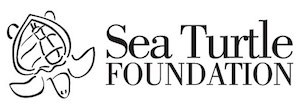Over the month-long program, more than 200 hawksbill and 150 green turtles nests were laid. While this might sound like a lot for a beach that is less than 2km long, it is well short of the numbers being seen when the program began. There are serious concerns for the hawksbill turtle population, and data collected over many years contributed to the Government’s decision to change the official status of the species last year from ‘vulnerable’ to ‘endangered’ under the Queensland Nature Conservation Act.
So why are numbers going down?
Historically, hawksbill turtles that nest on Milman were known to feed and mate in the waters of Papua New Guinea to the north, in the western Pacific islands to the east to, as well as in Australia. Last nesting season, WWF-Australia worked with the Apudthama Indigenous Rangers and Dr. Ian Bell from the Department of Environment and Science to put satellite trackers on 10 hawksbill turtles. Every single one of these turtles stayed within Australian waters, including two individual turtles that are still transmitting signals from within the Great Barrier Reef more than a year after they were tagged. Tracks of where these turtles have traveled can be seen on seaturtle.org
Hawksbill turtle hunting is not illegal in Papua New Guinea, and tortoiseshell products made from hawksbill shells can be bought in many locations throughout much of the country. It is unclear how many turtles are hunted there, or whether the majority of products come from turtles caught as by-catch during other fishing activities. Is it possible that the turtles that used to feed in PNG and then come to Australia to nest are all gone?
Small pieces of broken plastic could be seen floating in great slicks between the clashing currents and every high tide left behind a colourful smattering of plastic among the driftwood and sea shells. When turtle hatchlings first leave the nest, those that make it to the water will spend time drifting in these floating rafts of debris, eating algae. With so many small pieces of plastic floating among these algae these young creatures are also believed to be eating a lot of plastic.
Studies in recent years estimate that at least 50% of turtles ingest some amount of plastic and this can lead to blockage of the intestines or piercing of the intestinal wall. Turtles can also die from toxic chemicals that make up the plastics or that have accumulated during the plastics journey across the seas. Turtles can also get sick or die from malnutrition as they feel full after eating plastic but don’t get any nutrition from this literal junk food.
All of this is likely to lead to some pretty big changes in important turtle habitat and feeding grounds. This is in addition to other serious climate change impacts affecting turtles, such as the effects on sex ratios of hatchlings and loss of nesting beaches due to increased severe weather events and sea level rises. However, a discussion of these impacts will have to wait for another day…
So, no, we cannot really identify one single reason why the western specific hawksbill turtles have been in a steady decline for the past quarter of a century. It is most likely that there many factors in play, and we need to change something if we want these gorgeous creatures to survive.
